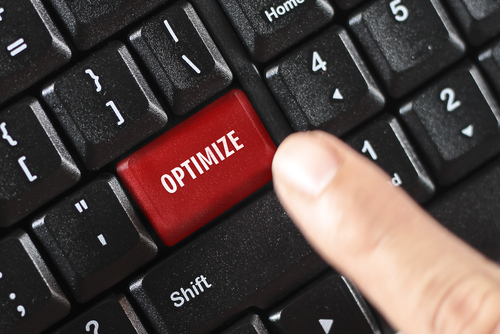 Reading Time: 4 minutes
Reading Time: 4 minutesSetting up a website and finding images that fit your needs, or fitting them to meet your needs can be frustrating. There has to be an easier way to optimize your images to make your website pop.
There are some important ins and outs to image optimization that every website owner should know.
What Is Image Optimization?
The point of image optimization is to keep your page loading times to a minimum while also allowing for images on your page to create image SEO. How does this work? The best way for image optimization is to reduce the image file size as much as possible without ruining the image.
It’s important for SEO purposes to have images on your page. With images available, someone searching for an image rather than words can still find you. Having images also draws more traffic to your site because the reader can look at your images and see what you’re offering.
The following are top ideas for optimizing your images:
- Use plain language to give descriptive names to your images
- Carefully optimize your alt attributes
- Be wise when choosing your image dimensions and product angles
- Use caution with regards to decorative images
- Thoroughly test all your images
These examples are only some of the numerous of ways to optimize images on your website.
Naming Your Images
Keeping the name of your image descriptive and plain aids in optimizing your SEO. It’s very easy to keep the name your camera assigns to an image, but that name won’t have specific keywords to help people find your page or image.
Think about your website searches and decide what patterns your readers gravitate toward. Those are the types of names you should be using for your images. It’s important to both draw them in with the image and give them a reason to read the content.
Optimizing Alt Attributes
The text that shows when hovering over an image is known as the alt attribute of the image. This feature boosts SEO value and provides more accessibility options to your images. By using keywords in the alt attribute, you’re providing a higher chance of traffic to your site and a possibly higher search ranking. Some of the best advice to adhere to for alt attributes follows the same reasoning as the advice given for image optimization above – in similar fashion you should describe the image in alt attributes in plain language. Other advice includes:
- Use model and serial numbers (if applicable) in the alt attributes
- Don’t overuse keywords. Provide only a couple of keywords (maybe 2-3 at the most)
- Not every image should have an alt attribute. Some search engines might penalize your site on the basis of over-optimization if you have alt attributes for decorative images
It is also important to check your alt attributes once in a while to ensure they are still correct. It’s easy to miss important errors when you’re trying to work on multiple images at once.
Image Dimensions and Product Angles
Having multiple angles of a product in images is always a wise idea. For example, if you’re selling a car, you wouldn’t just show a single image of the outside. People looking to purchase a car would want to see the interior, the rims, the engine, and even additional angles, such as the front, rear, and side. Be sure you are always adding images from every angle you can, so potential customers can get a true view of your product.
One of the biggest concerns with adding all the extra images is size. The dimensions of your images should be reasonable and allow each image to sit nicely on the page. It’s extremely important to keep the page looking clean and allowing space between images. Many people will turn away, for example, if a page has all the images compacted to fit into a small space.
Decorative Images
Despite having an aesthetic appeal, decorative images can be a hinderance to your page. Having too many images can increase the combined file size and cause slower loading times for your website. Slower loading times typically turn people away. No one likes to wait for a website to load and they may likely go to a competitor’s page that has a faster load time.
Consider any image not directly related to the products you sell as decorative – and therefore unnecessary. Limit these images, both in size and quantity, in order to optimize overall file size and loading time. Decorative images can be attractive and may be tempting to use, but they can detract from the important features of your page and cause an array of problems in the long run.
Image Testing
One of the most important steps in adding images to your website is thoroughly testing them. It’s imperative to know that the number of images, angles of the product, and number of products listed are at an optimal level for a quick and smooth running website.
Having too many images per page can cause a slower loading time or make the page look too full. You don’t want your website to look like you care more about pictures than information and have pictures jammed into every inch of the page.
It’s also a major selling point to have the right angles of the products. Keep track of the most viewed angles for your products and use that to take future pictures of what the customers want to see. You don’t have to show every product at every angle, just provide the kind of view the customer would be looking for if they were examining the product in person.
You also want to be sure you don’t have too many products on one page. The number of products per page is a contributing factor to the number of images on the page. Too many products can mean too many images and now your page looks overcrowded.
Conclusion
It’s easy to optimize your images and keep your website at its best with a little research. Keep this list handy and use all of the ideas here to optimize your product pages. Remember: images can make or break your website if you aren’t careful. Use them wisely.
At Vizion Interactive, we have the expertise, experience, and enthusiasm to get results and keep clients happy! Learn more about how our SEO Audits, Local Listing Management, Website Redesign Consulting, and B2B digital marketing services can increase sales and boost your ROI. But don’t just take our word for it, check out what our clients have to say, along with our case studies.




